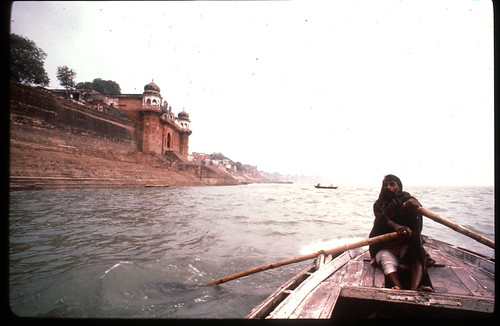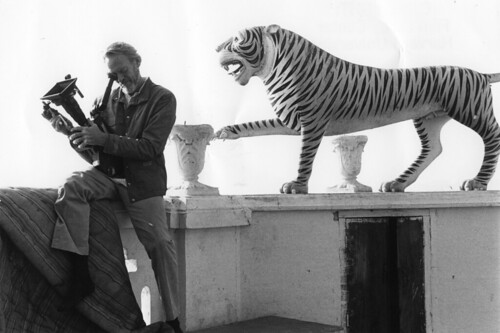Robert Garner is no ordinary ethnographic documentarian. Caught somewhere between artist and scientist, the filmmaker’s career highlights include such academic triumphs as a tenured teaching position at Harvard. His true talent lies in capturing the visual essence of his subjects, creating works are as visually inspirational as well as intellectual stimulation, and he has often said that poetry is the most effective way to tell a story and his objective as a filmmaker is to make everyone in his audience an anthropologist. His 1986 film “Forest of Bliss” about the death rituals in the Indian town of Benares is creative and modern yet completely functional as a scientific film, playing like a travelogue of the city, but only of the moments Gardner felt were relevant to the film.
Gardner chose not to narrate the film simply because he had learned over the years that it provided no benefit to his work. Left to interpret the wails and chants of the people of Benares, the audience is forced to engage in scientific reasoning to really find out what is transpiring on the screen. We have shots of everyday life and then of people experiencing joy. We see images of a city with deep religious roots contrasted with the fresh youth of today. Children fly kites and play games in the street. And woven between these moments of normalcy we watch the dead parade through the streets. Gardner shocks the audience by opening with a vicious dog fight – much less about pride but more to the degree of avoiding starvation. Everything about this town centers around death. It seems as though Gardner chose to contrast these two images only to romanticize the morbid rituals of the people of Benares.
At dawn we follow a man from his home through a maze of stairwells and alleyways to the river for his morning bath. Another point in the film we see children flying kites at the bank and dogs drinking water from the edge. Not until later do we see that this is the same body of water that the dead bodies are transported on and disposed of. Gardner continues to emphasize throughout the film the degree of normalcy to which the people of Benares treat the entire process of death by making their daily functions seem rote and the people not even phased by the funeral processions.
The film opens up at sunrise and ends at sunset. To say that all the footage that was incorporated in the film took place in a single day is impossible and would greatly falsify Gardner’s observations. Without scientific debate, I would only have thought that this film was meant to bring to like the fact that the people of Benares only do four things: walk stairs, care for the dead, build things, and ring bells and chant. Instead we learn that the holy city of Benares is a place that people go to die simply for its death rituals. We do not see more than a few glimpses of mourning, as the film chooses to focus on their unique disposal of the dead. The body is first bound in cloth and then placed on hand-made wooden gurneys. At this point the body is dressed in fabric and chants (what we assume must be prayers) are spoken while the area is cleansed and body begins its journey through the town to the shore to be burned. And many bells are rung.











